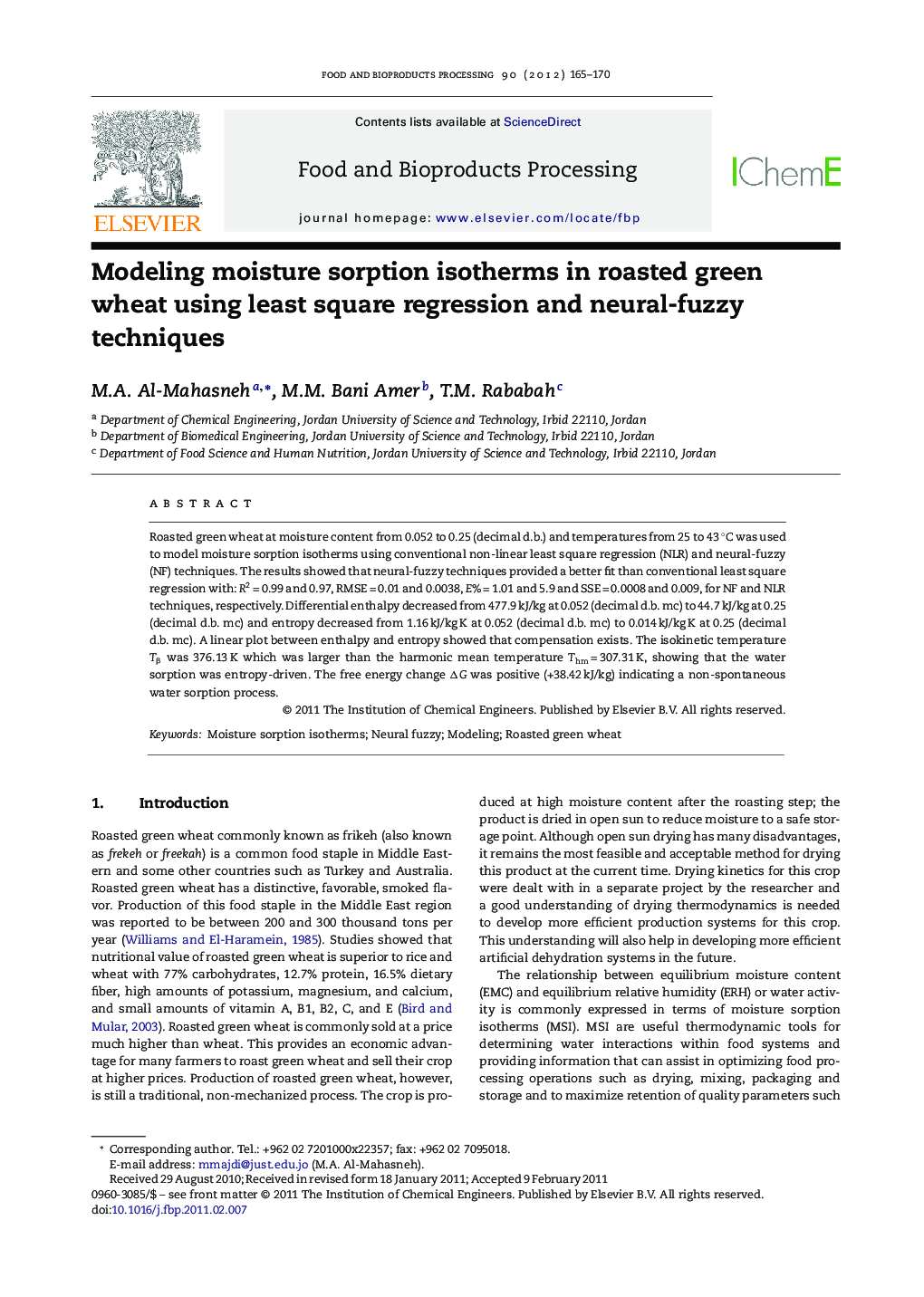| کد مقاله | کد نشریه | سال انتشار | مقاله انگلیسی | نسخه تمام متن |
|---|---|---|---|---|
| 19322 | 43059 | 2012 | 6 صفحه PDF | دانلود رایگان |

Roasted green wheat at moisture content from 0.052 to 0.25 (decimal d.b.) and temperatures from 25 to 43 °C was used to model moisture sorption isotherms using conventional non-linear least square regression (NLR) and neural-fuzzy (NF) techniques. The results showed that neural-fuzzy techniques provided a better fit than conventional least square regression with: R2 = 0.99 and 0.97, RMSE = 0.01 and 0.0038, E% = 1.01 and 5.9 and SSE = 0.0008 and 0.009, for NF and NLR techniques, respectively. Differential enthalpy decreased from 477.9 kJ/kg at 0.052 (decimal d.b. mc) to 44.7 kJ/kg at 0.25 (decimal d.b. mc) and entropy decreased from 1.16 kJ/kg K at 0.052 (decimal d.b. mc) to 0.014 kJ/kg K at 0.25 (decimal d.b. mc). A linear plot between enthalpy and entropy showed that compensation exists. The isokinetic temperature Tβ was 376.13 K which was larger than the harmonic mean temperature Thm = 307.31 K, showing that the water sorption was entropy-driven. The free energy change ΔG was positive (+38.42 kJ/kg) indicating a non-spontaneous water sorption process.
Research highlights
► Moisture sorption thermodynamics of roasted green wheat were modeled using NFM and NLR.
► NFM showed an excellent fit to experimental data and performed better than NLR.
► Enthalpy–entropy plot showed that compensation exists and sorption was entropy-driven.
► Moisture sorption isotherms are important to drying and other processing steps.
Journal: Food and Bioproducts Processing - Volume 90, Issue 2, April 2012, Pages 165–170